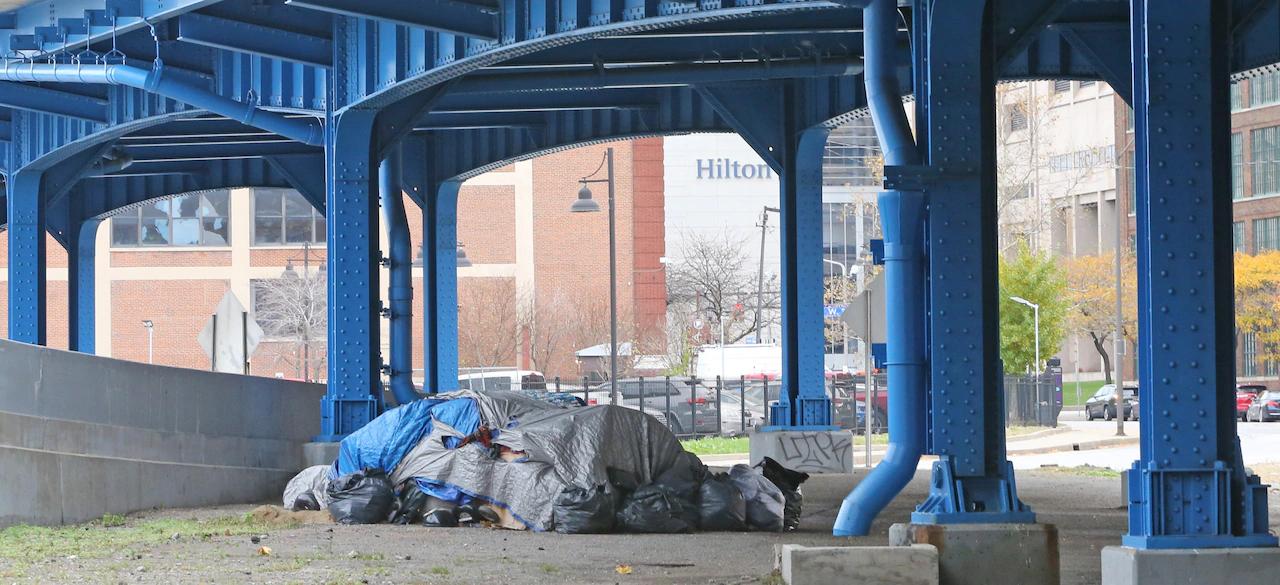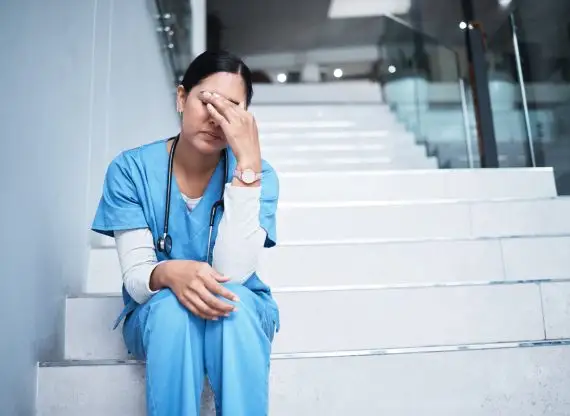Copyright cleveland.com

CLEVELAND, Ohio – If Cuyahoga County Council follows through with plans to cut Alcohol, Drug Addiction and Mental Health Services (ADAMHS) Board funding by $8.5 million over the next two years, providers who rely on that money warn it will ripple through the county’s behavioral health and homelessness systems — pushing more people toward hospitals, jails and the streets. County Executive Chris Ronayne has proposed cutting the annual subsidy to the ADAMHS board by $4 million in 2026 and $4.5 million in 2027 as part of a larger effort to balance the county’s budget amid numerous funding strains. To make up for the loss, the ADAMHS Board’s Interim Director Felicia Harrison said they’re planning “a shared sacrifice” of 20% cuts across the board, which she believes will keep the entire system intact without having to eliminate any services. But providers contesting the cuts say the consequences will be anything but minimal. FrontLine Services Frontline Services, which responds to tens of thousands of crisis calls each year, warned the cuts would be devastating. CEO Corrie Taylor said the 20% reduction would mean $1 million in lost revenue, weakening services that prevent hospitalizations, incarceration and homelessness. The ADAMHS Board has said it also plans to cut Frontline’s $1.5 million subsidy for the Stricklin Crisis Stabilization Unit, to free up funding for a new county crisis center. Taylor said the unit served 378 clients last year, diverting 50 people from emergency departments and helping 157 people transitioning from higher-level care – saving $1.8 million in healthcare costs. Rick Oliver, director of Crisis and Trauma Services at Frontline, also noted more than 15,000 requests for services already this year, 20% of which he said involved people at risk of suicide. But cuts to funding would result in cuts to staffing, he argued, and that will result in fewer services for the people who need them most – and potentially loss of life. “These programs are not just services; they are essential,” Oliver said. ”They save lives, they save money and they make our community stronger.” Taylor also repeated her calls for council to restore funding for the North Point Transitional Housing, which was eliminated under Ronayne’s budget. Ronayne justified the cut after poor conditions forced North Point to close its existing building earlier this month, but Taylor said they now have a new place to go and would be able to reopen in 2026, though that would require additional dollars. Lutheran Metropolitan Ministry Lutheran Metropolitan Ministry, which operates the men’s homeless shelter, said it will suffer two hits under Ronayne’s budget next year. The budget proposes cutting only $241,000 from LMM’s funds each year – money which is being replaced by grant dollars to keep the shelter whole. However, Chief Program Officer Michael Sering said Ronayne’s proposed $4.35 million budget doesn’t account for a full 12-months in services, nor does it replace one-time funding they’re losing at the end of the year, leaving a projected budget shortfall of about $1.85 million. That shortfall, Sering said, comes on top of additional cuts expected as part of the ADAMHS Board’s 20% reduction, as well as expected cuts in city funding. If money isn’t restored, Sering said LMM will have to close the overflow shelter, which served 250 families last year when other shelters were at capacity. It will also have to shutter its transportation program, which he said provided over 500 trips to shelters last year. “Communities that failed to preserve shelter capacity, including Washington D.C. and Los Angeles, now face sprawling encampments and expensive enforcement efforts,” Sering said. “In contrast, Cuyahoga County’s coordinated system...has kept unsheltered homelessness among the lowest in the nation.” New Directions Mike Matoney, CEO of New Directions, which provides mental health and addiction recovery services to adolescents, told council the ADAMHS Board cuts would further limit access to care already strained by reimbursement issues. He said ADAMHS Board funding already doesn’t cover room-and-board costs the way other referral agencies do. As a result, only 34 youth received those services last year and 14 have this year, leaving numerous children lingering on waiting lists. Fixing that gap, he said, would cost about $165,000 a year. But additional cuts would make the problem worse. “Based on (the ADAMHS Board’s) $40-to-$60 million budget, I think it can be fit in,” Matoney said. “For every dollar spent on adolescent rehab, it yields a $9 to $12 cost avoidance in our community.” Y-Haven Y-Haven provides housing and treatment for roughly 210 people a day who are homeless, re-entering from incarceration or in addiction recovery. But Director Ed Gemerchak said the ADAMHS Board’s 20% reduction would cut $150,000 from his budget, limiting how many people they can help. That, he warned, would undercut programs where 78% of graduates move into stable housing and more than half find employment. “They represent lives restored,” he said. “When people can’t get our help, the costs show up elsewhere – in shelters, our hospitals and our jails." Other impacts Ronayne’s 2026–2027 proposal calls for more than $24 million in reductions to Health and Human Services programming — cuts that touch nearly every department funded by the HHS levy, from children and senior programs to homelessness and behavioral health services. Council previously heard how cuts could impact senior meals, workforce programs and the county’s first child abuse protection team. Remaining HHS departments shared their circumstances Tuesday. While the Office of Homeless Services is facing $1.5 million in cuts in 2026 and $756,000 in cuts in 2027, Director LeVine Ross said they were able to find grant funding to offset a third of the loss in 2026 and 66% in 2027. That kept budgets whole for LMM, FrontLine and two rapid rehousing programs, Family Promise and Journey Center. However, homeless services are facing a second, much larger funding threat, she said. The Trump administration has proposed capping Housing and Urban Development (HUD) funding for permanent supportive housing at 30% -- a significant reduction from the current 87% allocation. That could slash the county’s available housing dollars from $37–49 million a year to $11–15 million, Ross said. The government is also considering mandating residents participate in mental health and substance abuse treatment or counseling services, which Ross fears will create barriers to housing. She also worries whether there are enough community resources to meet the requirements, given all the other agencies competing for the same services. “How do we house individuals who may not want to take in that mental health component?” Ross asked. “Because if we can’t provide housing, appropriate housing...based on these this new criteria, then we’re going to have individuals who are basically homeless and have nowhere to go.” Ross anticipates the county will need to restructure services to provide more transitional housing instead, to potentially access more federal funding, but that comes with its own challenges. Where residents can stay in permanent supportive housing indefinitely, transitional housing usually caps stays at two years, leaving questions about where residents will go after. Ross warned the strain will eventually trickle down to shelters and other service providers. “It’s going to affect the whole continuum of care and how we actually provide housing for individuals,” she said, though she noted that the scenario remains hypothetical for now. The government has not given the official directive to cap funding, amid the shutdown. Other departments are absorbing cuts, too: Office of Early Childhood programs face nearly $1.8 million in cuts in 2026 and $1.9 million in 2027. The largest cuts proposed for the Universal Pre-K program, however, reflect underspending, interim director Alyssa Swiatek said. Family and Children First Council faces $596,000 in cuts in 2026 and $705,000 in 2027, consolidating some providers but reducing funding for in-school supports, college tours and after school programs. “We’re going to work...to ensure that the children do not feel these cuts, that it’s as minimal as possible,” Director Robin Martin pledged. The Office of Reentry faces $400,000 in cuts both years, which Director Simeon Best said will maintain their core programs but require they postpone some new initiatives. They include a transportation program that would help residents get home after being released from incarceration, housing planning and grief counseling. Council members reiterated that their priority is to preserve core services with the levy dollars they have but acknowledged that doing so will mean painful reductions elsewhere. The situation is “dire” for everyone, Council Vice President Yvonne Conwell told providers who have asked for their funding to be restored. In hard times, the county must prioritize what it is required to do, sometimes at the expense of what it would like to do.” “It’s not that any of us want to cut or redistribute funds,” Conwell said. “We have a mandate of certain things that we’re supposed to take care of."



